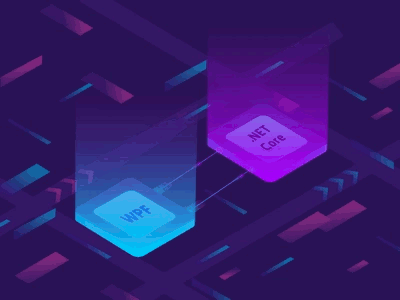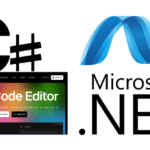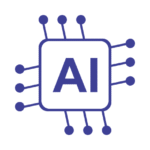As large language models (LLMs) evolve at breakneck speed, software developers are increasingly turning to AI to accelerate their C# development. From writing boilerplate code to optimizing runtime performance, LLMs can serve as pair programmers, bug fixers, and even architecture consultants.
Top LLMs (Large Language Models)
There are a lot of large language models out there. Some are well-known, and others matter for more specific reasons. Listing every single one would be tough. Plus, new ones come out so fast that the list would be out of date almost right away.
When I say “best,” I don’t just mean the ones with the highest test scores. I’ve picked models that are important, interesting, or widely used. Most of them do perform well, but that’s not the only reason they’re here. I’ve also focused on tools you can actually try or build with, not just models from research papers or press releases.
What is an LLM?
LLMs are a type of AI that use deep learning to read and write text. They’re trained on huge amounts of data and can respond in ways that seem natural, but how they work inside isn’t easy to see. That’s why people call them “black boxes.”
Modern LLMs started to come together around 2014. That’s when a new technique called the attention mechanism was introduced. It helps the model focus on the most important parts of the input, kind of like how people pay attention when reading or listening. This idea came from a research paper called Neural Machine Translation by Jointly Learning to Align and Translate.
Why Use LLMs for C# Coding in 2025?
C# remains a dominant language in enterprise development, particularly with .NET 8 becoming the backbone for modern desktop, web, and cloud applications. With AI-assisted development, productivity can increase by up to 55%, according to OpenAI’s latest research.
Top LLMs can:
Autocomplete and generate full functions/classes
Explain error messages and refactor legacy code
Suggest unit tests and performance improvements
Integrate with IDEs like Visual Studio and Rider
1. GPT-4o by OpenAI

GPT-4o, short for “Omni”, is the latest flagship model from OpenAI and a direct successor to GPT-4. Unveiled in April 2025, this multimodal model supports real-time interaction across text, image, and audio, enabling a highly natural and fluid coding experience. It’s especially impressive for developers thanks to its fast 232ms response time, comparable to human-level latency.
Designed for seamless integration into environments like ChatGPT and GitHub Copilot, GPT-4o enhances C# programming workflows with superior context awareness, instant error identification, and code explanation tools. It can even analyze screenshots or application UIs during development for visual debugging tasks, a major leap in human-AI collaboration.
Key Features:
Released April 2025, GPT-4o (“omni”) is OpenAI’s fastest and most capable model yet.
Multimodal input/output (code, voice, vision, text).
Near real-time latency, perfect for IDE plugin use.
C# Coding Strengths:
Deep .NET and C# understanding, especially with SDKs and LINQ.
Supports plugin-based environments like GitHub Copilot Chat inside Visual Studio.
Offers function-calling, debugging suggestions, and API scaffolding.
Performance Snapshot:
| Feature | Score (1-10) |
|---|---|
| Code Accuracy | 9.5 |
| IDE Integration | 10 |
| Error Resolution | 9 |
| Speed/Responsiveness | 10 |
Code Example of C# API with React admin dashboard code

Ideal For:
Enterprise devs using Azure, ASP.NET Core, and microservice architecture.
2. Claude 3.7 by Anthropic

Claude 3.7 is the latest evolution of Anthropic’s trusted Claude model family, released in 2025 as part of its Claude 3 series. Known for its deep contextual understanding, fact-based reasoning, and safety-centric architecture, Claude 3.7 is quickly becoming a favorite among developers focused on secure and maintainable code.
One of Claude’s standout features is its massive context window, handling over 200,000 tokens, which makes it especially valuable for analyzing and refactoring large C# codebases, from monoliths to modern service-oriented architectures. Claude 3.7 excels at maintaining code clarity, refactoring with logic-based justification, and offering detailed in-line explanations, ideal for development teams focused on quality assurance and technical debt reduction.
Anthropic’s commitment to “Constitutional AI” also means that Claude is designed to avoid hallucinations and prioritize trustworthy, explainable outputs, even when dealing with complex object-oriented programming paradigms or legacy .NET patterns.
Claude 3.7 is accessible via API and also powers the Claude web app, with integrations available in platforms like Slack and Notion for collaborative development workflows.
Key Features:
Trained for constitutional AI and factual accuracy.
Best-in-class code reasoning and security auditing.
Handles 200k+ tokens, perfect for reviewing large codebases.
C# Coding Strengths:
Contextual understanding across multiple files.
Security-first approach when analyzing and suggesting code.
Excels in explaining refactor logic and complex inheritance structures.
Performance Snapshot:
| Feature | Score (1-10) |
|---|---|
| Code Accuracy | 9 |
| IDE Integration | 7 |
| Error Resolution | 9.5 |
| Speed/Responsiveness | 8.5 |
Example

Result

Ideal For:
Code reviews, technical debt analysis, and C# monolith to microservice migrations.
3. Gemini 2.5 by Google DeepMind

Gemini is Google’s advanced family of LLMs designed to replace its former PaLM-based architecture. Following its rebranding from Bard to Gemini, the model now powers Google’s conversational AI suite and is deeply embedded into the Google Workspace, Android ecosystem, and Vertex AI platform.
The Gemini 2.5 update, released in early 2025, significantly improved the model’s multimodal reasoning, with upgraded support for text, image, audio, and even video. It comes in three performance tiers:
Ultra: the most powerful, ideal for intensive dev work
Pro: a mid-range generalist for cloud-integrated applications
Nano: an edge-optimized model for efficient on-device tasks
Gemini 2.5 is particularly useful for C# developers working in cloud-native or hybrid environments, offering strong synergy with tools like Firebase, Android Studio, and Google Cloud Run. Previews of Gemini Flash (introduced in late 2024) show promising enhancements for faster generation and visual analysis.
Key Features:
Integrated with Google’s AI ecosystem including Android Studio, Firebase, and Colab.
High compatibility with Cloud Run and Google Cloud Functions.
C# Coding Strengths:
Strong cloud-native integration.
Can interpret complex API documentation and generate C# client code.
Visual debugging explanations using diagrams (via Gemini Advanced UI).
Performance Snapshot:
| Feature | Score (1-10) |
|---|---|
| Code Accuracy | 8.5 |
| IDE Integration | 8 |
| Error Resolution | 8.5 |
| Speed/Responsiveness | 8.5 |
Example Code admin dashboard built using C# and React

Result

Ideal For:
Cloud-first C# developers using GCP or Unity game development workflows.
4. DeepSeek R3

DeepSeek R3 is the third-generation model from DeepSeek, a rapidly rising open-source LLM initiative focused on AI-assisted software development. Released in 2025, DeepSeek R3 is built for high-performance code generation, task-solving, and contextual reasoning across major programming languages, including strong support for C# and .NET development.
This model has consistently scored well on standard programming benchmarks such as HumanEval and CodeBench, demonstrating reliability in generating complete functions, solving algorithmic problems, and building backend components like RESTful APIs and service layers in C#.
What sets DeepSeek R3 apart is its open accessibility and developer-first approach. Unlike proprietary models like GPT-4o or Claude 3.7, DeepSeek R3 offers greater transparency, with weights and training methodologies made public. It’s a strong alternative for developers and teams looking for cost-effective, self-hosted, or privacy-respecting solutions.
Although its IDE integration and real-time feedback aren’t quite on par with commercial-grade models, its output quality for C# logic and syntax remains consistently strong, especially in command-line and script-based workflows.
Key Features:
China-based open LLM optimized for coding.
Emphasizes code completion and problem-solving skills.
C# Coding Strengths:
Strong performance on real-world programming benchmarks (HumanEval, CodeBench).
Competitive accuracy on generative tasks like controller logic or WebAPI endpoints.
Performance Snapshot:
| Feature | Score (1-10) |
|---|---|
| Code Accuracy | 8.5 |
| IDE Integration | 6 |
| Error Resolution | 8 |
| Speed/Responsiveness | 7.5 |
Ideal For:
Freelancers or developers needing open-source alternatives to GPT-4o.
5. Mistral Large 2

Mistral Large 2 is the latest addition to Mistral AI’s lineup of high-efficiency coding LLMs. Released in July 2024, this mixture-of-experts model boasts 123 billion parameters and supports a 128k context window, allowing for extensive in-memory analysis of large C# projects or multi-file solutions.
This model excels in multilingual code generation, supporting over 80 programming languages, including C#, as well as global spoken languages like French, German, and Spanish. Mistral is especially well-suited for on-device deployment, offering a privacy-conscious solution with low latency for local dev environments. Also notable is Pixtral Large, a multimodal sibling model launched in November 2024 that introduces visual input processing alongside code and text.
All models are available via Le Platforme, Mistral’s API-based web service.
Key Features:
Compact, efficient LLM designed for on-device use.
Best known for code portability and low-latency edge computing scenarios.
C# Coding Strengths:
Lightweight and privacy-respecting.
Decent understanding of Unity, game dev, and .NET libraries.
Performance Snapshot:
| Feature | Score (1-10) |
|---|---|
| Code Accuracy | 7.5 |
| IDE Integration | 6 |
| Error Resolution | 7 |
| Speed/Responsiveness | 8 |
Ideal For:
Edge deployment and local tooling without needing cloud access.
Visual Summary: C# Coding LLM Comparison
| Model | Accuracy | IDE Support | Speed | Best Use Case |
|---|---|---|---|---|
| GPT-4o | 9.5 | 10 | 10 | Full-stack enterprise C# development |
| Claude 3.7 | 9 | 7 | 8.5 | Secure code reviews & refactoring |
| Gemini 2.5 | 8.5 | 8 | 8.5 | Cloud-native C# app development |
| DeepSeek R3 | 8.5 | 6 | 7.5 | Open-source dev environments |
| Mistral Large 2 | 7.5 | 6 | 8 | Lightweight, on-device coding |
Which LLM Should You Choose for C# in 2025?
Choose GPT-4o if you need the best-in-class C# performance and integration with GitHub Copilot or VSCode.
Go with Claude 3.7 if accuracy, logic, and secure code practices are your top priorities.
Try Gemini 2.5 if you’re building with GCP or want tight integration with Google’s tooling.
Use DeepSeek R3 for a balance between open-access and strong performance.
Deploy Mistral Large 2 for local dev environments where latency and privacy matter most.
The right LLM isn’t just about raw intelligence, it’s about fit, integration, and responsiveness in your existing development stack.

Jessica is a highly accomplished technical author specializing in scientific computer science. With an illustrious career as a developer and program manager at Accenture and Boston Consulting Group, she has made significant contributions to the successful execution of complex projects.
Jessica’s academic journey led her to CalTech University, where she pursued a degree in Computer Science. At CalTech, she acquired a solid foundation in computer systems, algorithms, and software engineering principles. This rigorous education has equipped her with the analytical prowess to tackle complex challenges and the creative mindset to drive innovation.
As a technical author, Jessica remains committed to staying at the forefront of technological advancements and contributing to the scientific computer science community. Her expertise in .NET C# development, coupled with her experience as a developer and program manager, positions her as a trusted resource for those seeking guidance and best practices. With each publication, Jessica strives to empower readers, spark innovation, and drive the progress of scientific computer science.







